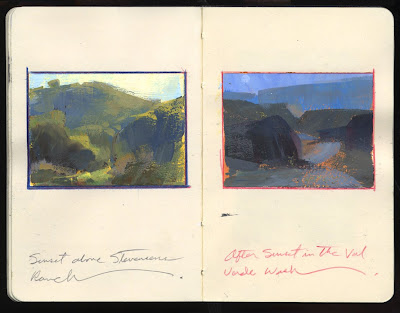


What I find fascinating in
Kristine Moran's paintings is the sense of discipline. The disasters that keep appearing, the huge messes of messes, the total wreck of a reality she introduces us into, seem like a carefuly planned catastrophy.
No wonder she arrived at theater interiors, with their settings ready for the show, with the wardrobe mirrors reflecting every possible aspect of the mask, with their ridiculously decorative shapes that are bound to disappear when
it happens.
This stage is set for failure. A beautiful failure of something that seemed to be going right. Everything was set, every rule was applied and every hope was nurtured.
And yet, the closer to what matters, to the
subject (the topic, the I, the eye), the bigger the tension.
Until it all just blows up in pieces.
But not entirely. And call me an optimist, but this structure which reappears even in the most amorphous circumstances sustains not just the painting, but also, whatever is left of me, the empathic viewer.
Moran's pictures have evolved into an astonishing universe where 3D space that contains, well, how do I put it... paint. Color. Texture. Paint
ing is the better word here. It is as if the painting, a 2D picture, moved into a 3D space. And the space accepted it, incorporating it in its realm. If you think this is a metaphor, see this:

Kristine Moran has been
compared to Francis Bacon. Yes, sure, the inter-dependence of form and reality, their perverse games of hide-and-seek... But Moran's work seemingly leaves the human body - though certainly not the human - much further behind. And maybe because of that, it appears as not so much a struggle of the artist, as a struggle between the forms themselves. As she watches them, cooly, from a distance.
The titles are, in order of appearance: You Used To Be Alright, What Happened ; The World Is Yours ; Collapse of Will ; Hunter - Gatherer.
Read more "Beautiful Catastrophy - Kristine Moran's painting..."
 Still from Under Discussion, a video by Allora & Calzadilla (great interview with them here)
Still from Under Discussion, a video by Allora & Calzadilla (great interview with them here)
































